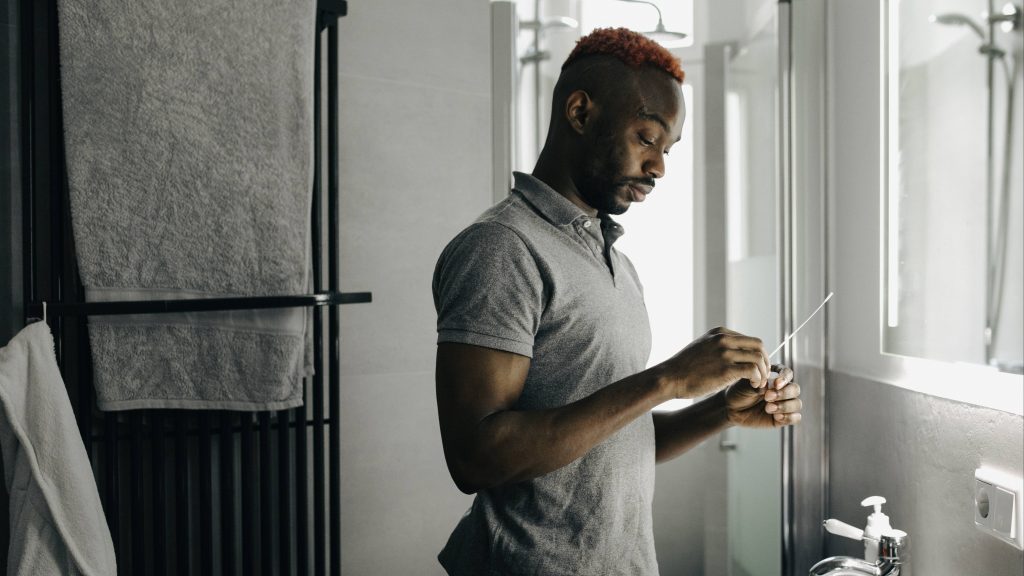
The emergence of a new COVID-19 variant, omicron, has heightened safety protocols and plans to help people stay safe from illness as researchers and experts learn more about the newest strain of SARS-CoV-2. This includes plans to expand access to COVID-19 over-the-counter tests for people to use at home in the U.S.
"We have good evidence that the testing that we're using to detect patients who have COVID-19 is going to continue to be effective in individuals infected with the omicron variant," says Matthew Binnicker, Ph.D., director of Clinical Virology at Mayo Clinic.
Watch: Dr. Matthew Binnicker talks about COVID-19 testing.
Journalists: Soundbites are available in the downloads at the bottom of the posts. Please courtesy: "Matthew Binnicker, Ph.D./Laboratory Medicine and Pathology/Mayo Clinic." B-roll of Mayo Clinic Laboratory COVID-19 tests are also available in the downloads.
There are two types of tests approved by the Food and Drug Administration to diagnose current COVID-19 infection: molecular tests (e.g., polymerase chain reaction [PCR]) and antigen tests. Both are done on a nasal swab specimen.
A polymerase chain reaction or PCR test is a test that looks for the virus’ RNA in a patient’s sample. A sample is collected by inserting a swab into a person's nostril and taking cells from the back of the nose (nasopharyngeal swab). Some lab tests allow for patients to spit into a tube to get a saliva sample. PCR tests are accurate when properly performed by a health care professional, but rapid tests can miss some cases.
Antigen tests detect certain proteins in the virus. Using a nasal swab, antigen tests can produce results in minutes. These tests are faster and less expensive than molecular tests, but there is an increased chance of false-negative results.
"At-home testing is, of course, becoming more common as more testing options for individuals at their home become available. The omicron variant should be detected by rapid antigen tests and other tests — at least that's what the current data are telling us," says Dr. Binnicker.
Self-testing kits, many of which are antigen tests, are not failproof and it is possible for a test to give a negative result in some people who have COVID-19 infection.
"The lab-based PCR tests are more sensitive. They're able to give us a broader window of infection because they can detect lower amounts of the virus," says Dr. Binnicker. "Yes, the at-home tests are an option but I'm recommending that those be used in closer proximity to a gathering and also that they shouldn't be used in isolation as a sole way of mitigating risk."
Dr. Binnicker says they really should be used in combination with masking and distancing, if possible. And, be mindful of when you are going to self-administer the test.
"If you're going to be performing an at-home test, try to do that the day of the event, because that's going to give you the best information of whether someone has high amounts of the virus in their system at that time," Dr. Binnicker says.
Dr. Binnicker says the omicron variant reinforces the importance of COVID-19 vaccination.
"The emergence of this new variant continues to reinforce the importance of a few protective and precautionary measures that we've been following for 20 months; first and foremost, the importance of vaccination. And for those who have completed their vaccination to get a booster. If we can build up our walls of defense as high as possible and have levels of antibodies and levels of immunity within the general population, the chance of a virus taking off like wildfire is significantly decreased," he says.
To date, more than 5.5 million COVID-19 tests have been performed at Mayo Clinic Laboratories. For more information on COVID-19 testing, visit Mayo Clinic Laboratories
Related posts:
- How emerging variants could affect COVID-19 testing, vaccines and spread
- Mayo Clinic develops test to detect COVID-19
- What you need to know about COVID-19 tests
For the safety of its patients, staff and visitors, Mayo Clinic has strict masking policies in place. Anyone shown without a mask was either recorded prior to COVID-19 or recorded in a nonpatient care area where social distancing and other safety protocols were followed.
Information in this post was accurate at the time of its posting. Due to the fluid nature of the COVID-19 pandemic, scientific understanding, along with guidelines and recommendations, may have changed since the original publication date.
For more information and all your COVID-19 coverage, go to the Mayo Clinic News Network and mayoclinic.org.
Learn more about tracking COVID-19 and COVID-19 trends.







